by Peter Jenkins
Discussions last month in Astana, during a five day meeting on “Nuclear Dangers” hosted by the Kazakh government, gave rise to some sobering findings.
A recent vote in the UN General Assembly had lifted the spirits of many of the participants in this conference. On July 7, 122 States – over 60% of the UN membership – voted for the adoption of a Treaty on the Prohibition of Nuclear Weapons, to complement existing treaties that ban the possession and use of chemical weapons and biological weapons.
Discussions in Astana brought home to these participants the reality that none of the nine states that currently possess, collectively, a total of some 15,000 nuclear weapons (US, Russia, UK, France, China, Israel, India, Pakistan and North Korea) has shown the slightest interest in incurring an obligation to eliminate nuclear weapons from their arsenals by becoming a party to the new treaty.
At best the new treaty has created a non-binding international norm that Non-Nuclear Weapon States can deploy to browbeat nuclear-armed States into moving faster in a direction to which five of them claim to be committed, towards the world “free of nuclear weapons” for which President Barack Obama called in Prague in April 2009.
Equally disappointing for many participants was a stock-taking of the nuclear relationship between the United States and Russia. Those two countries have a record of nuclear arms control and reduction dating back to 1963.
Their most recent bilateral agreement, New Start, achieved in 2010, commits them to reducing deployed strategic nuclear warheads to 1550 by 2018. Implementation of that agreement has been proceeding to plan, but whether the Trump administration will agree to extend the agreement beyond 2021, when it is due to expire, has become uncertain.
Participants also heard that a decades-old US/Russia dialogue on nuclear matters is in abeyance and that the NATO/Russia Council has not met since 2013. Sam Nunn, a former Democrat Senator for Georgia and former chairman of the Senate Armed Services Committee, criticized NATO’s decision to suspend the Council to show disapproval of Russia’s annexation of Crimea. It is precisely in times of crisis that the Council ought to be meeting, he argued.
Yet another strand of the US/Russian nuclear relationship is also in trouble. Washington believes that Moscow has deployed a ground-launched cruise missile in contravention of the 1987 Intermediate-range Nuclear Forces agreement, one of the products of a golden age of US/Russian arms reductions. Russia denies the charge and points to US deployments of Ballistic Missile Defense launchers in Romania and Poland as breaches of that agreement. In the US Congress pressure is growing for US repudiation of the INF treaty. This could well lead to a revival of the threat to Western Europe from Russian non-strategic nuclear-tipped missiles.
Meanwhile, in the context of a $1.3 trillion modernization of its nuclear arsenal, the United States is developing a Long-Range Stand-Off cruise missile to deliver nuclear warheads to distant targets. These missiles, incorporating Stealth technology, will be launched from a new generation of Stealth bombers. Moscow will perceive these weapons as increasing Washington’s ability to carry out a highly destructive first strike on Russian targets, and Moscow will want to respond by improving its own first (and second) strike capabilities, both nuclear and non-nuclear. An existing strategic balance between the United States and Russia will be put at risk.
This risk could have been somewhat mitigated if President Obama had pledged that the United States would never be the first party to a dispute to resort to nuclear weapons (“No First Use”). Conference participants heard that Obama wanted a No First Use pledge to be part of his legacy. US allies in NATO and the Far East, who want the United States to be able to threaten first use in their defense, joined forces with domestic opponents to talk him out of it.
Compounding apprehensions about the future, a 20 year-old Comprehensive Test Ban Treaty still has not entered into force. There is no majority in the US Senate for its ratification. China, Israel, Egypt, Iran, Pakistan and India say they are waiting upon US ratification to embark on or complete their own ratification procedures. A global moratorium on nuclear testing has held since 1998, however – the special case of North Korea apart.
That special case was high on the conference agenda. Chinese, Japanese, Korean, Russian and American experts addressed it. None held out hope that diplomacy, intrinsically desirable, would induce the North Korean leadership to wind back their nuclear weapon program, or even freeze it. All expected North Korea to react to a US strike on nuclear and missile facilities by annihilating Seoul.
Other aspects of the nuclear proliferation agenda offered a brighter prospect. Participants heard that Iran is respecting its 2015 nuclear commitments; four international summits on Nuclear Security, between 2010 and 2016, have reduced the risk of terrorists acquiring weapon-grade material or actual warheads; nuclear-weapon-free zones cover Latin America, Africa, Central Asia, South East Asia and the Pacific.
One other agenda item merits a mention. Participants discussed the implications for “nuclear deterrence”, and “strategic stability” based on nuclear deterrence, of emerging non-nuclear military and cyber technologies. They agreed that this topic requires detailed study. There appears to be potential for advanced conventional and cyber weapons to threaten a perceived virtue of nuclear weapon systems, their invulnerability, but also to replace nuclear weapons as a source of strategic deterrence and stability.
Republished, with permission, from The Ambassador Partnership from its September 7 issue of AP Insight. Photo: U.S. Air Force holds nuclear weapons incident exercise in 2013 (U.S. Air Force/Airman 1st Class Sandra Marrero).

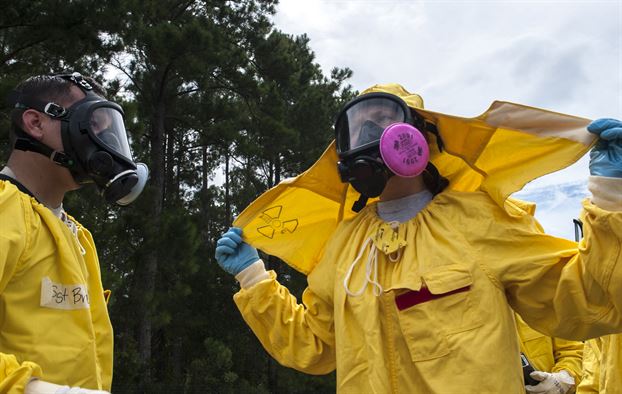
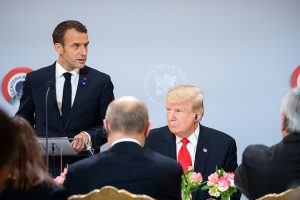
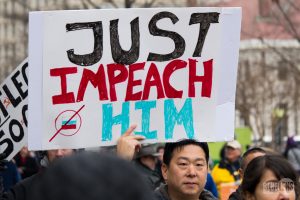
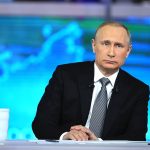
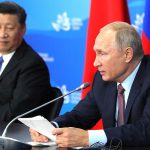
There is an existing treaty which has been disregarded.
The 1968 Treaty on the Non-Proliferation of Nuclear Weapons (NPT) includes: “The Parties of the Treaty. . .Declaring their intention to achieve at the earliest possible date the cessation of the nuclear arms race and to undertake effective measures in the direction of nuclear disarmament, Urging the cooperation of all States in the attainment of this objective, . . .Have agreed as follows: . . .Article VI . . .Each of the Parties to the Treaty undertakes to pursue negotiations in good faith on effective measures relating to cessation of the nuclear arms race at an early date and to nuclear disarmament, and on a Treaty on general and complete disarmament under strict and effective international control.”
Thanks to Don Bacon for reminding us of the obligations of the “nuclear powers” to reduce, NOT “improve” the nukes they already have. Obama and Trump, like the UK, have set up a continuation of the dangers present among the “legal” nuclear bomb nations (or abominations!!).
” NATO’s decision to suspend the Council to show disapproval of Russia’s annexation of Crimea.” What complete hypocrisy, as NATO surrounds Russia with bases, brings in more members to an obsolete and belligerent organization not at all helpful to peace which we desperately need.
This is a sad and sobering account of the hypocrisy of nuclear states that threaten war and annihilation against other countries that try to acquire nuclear weapons, yet continue to modernize and expand their own nuclear arsenals in clear violation of the NPT. The NPT was a deal between the “nuclear haves and have-nots”, calling on the countries that did not possess nuclear weapons not to acquire them and on those that possessed them to try “in good faith” to get rid of them. The recent escalation of rhetoric and the loose talk about “fire and fury the like of which the world has never seen” have only added to the state of lawlessness and bullying that exists in the world today. Given this situation, it is difficult to imagine that nuclear states would willingly give up their nuclear weapons in the short term. However, there are a number of steps that can be taken which mitigate the possibility of the use of nuclear weapons.
1- No first use. During the Cold War, the West retained the option of using nuclear weapons first due to the alleged superiority of the Warsaw Pact’s conventional forces in Europe. The Soviet Union has collapsed and the Warsaw Pact has been dismantled, yet NATO refuses to give up its “first use” doctrine. It is essential to put pressure on NATO to declare a no first use policy.
2- No tactical nuclear weapons. One of the greatest dangers to the unleashing of a nuclear catastrophe has been the development of tactical nuclear weapons, and short-range missiles with nuclear warheads to be used in battlefields. The possession of such weapons will act as an unintended trigger for the use of nuclear weapons by other countries and will result in a global nuclear confrontation.
3- No use of nuclear weapons against non-nuclear states. In order to encourage countries not to go nuclear, nuclear powers should be required to give guarantees of not using nuclear weapons against non-nuclear states.
4- Regional nuclear-free zones. While global nuclear disarmament must remain the goal, in the short term it is essential to move towards nuclear-free zones. For a long time, most Middle Eastern countries have called for a Middle East nuclear-free zone, something that Israel has resisted. Security in the Middle East would be greatly enhanced if the world demanded the dismantling of Israel’s nuclear arsenal, with guarantees of security for the state of Israel. The West is calling for the destruction of nuclear weapons in North Korea, but insists on having nuclear weapons in South Korea or on American warships that patrol the area. American nuclear weapons are also still based in Belgium, Germany, Italy, Netherlands, Turkey, etc. The world should demand that these nuclear weapons be removed.
In short, if nuclear weapons are confined to some strategic, long-range weapons that are maintained as an ultimate means of Mutual Assured Destruction (MAD) there would be much less risk of a nuclear holocaust. However, nuclear weapons are the ultimate weapons of mass destruction and the greatest example of terrorism. Their use cannot be justified by any just war theory. Therefore, the long-term goal should be to ostracise the countries that possess them until they are forced to give them up. We will either destroy nuclear weapons or they will destroy the whole world.
1. As I recall, Saudi Arabia was somewhat strongly in favor of promoting a nuclear-free Middle East through the Gulf Council or some such forum. The goal was to de-nuke Israel of course. But KSA has been neutered by the US in this matter, which has included forcing KSA to drop its opposition to Israel which has nukes and replace it with opposition to Iran which doesn’t have nukes.
2. South Korea’s defense minister on Monday said it was worth reviewing the redeployment of American tactical nuclear weapons to the Korean Peninsula to guard against the North, a step that analysts warn would sharply increase the risk of an accidental conflict.